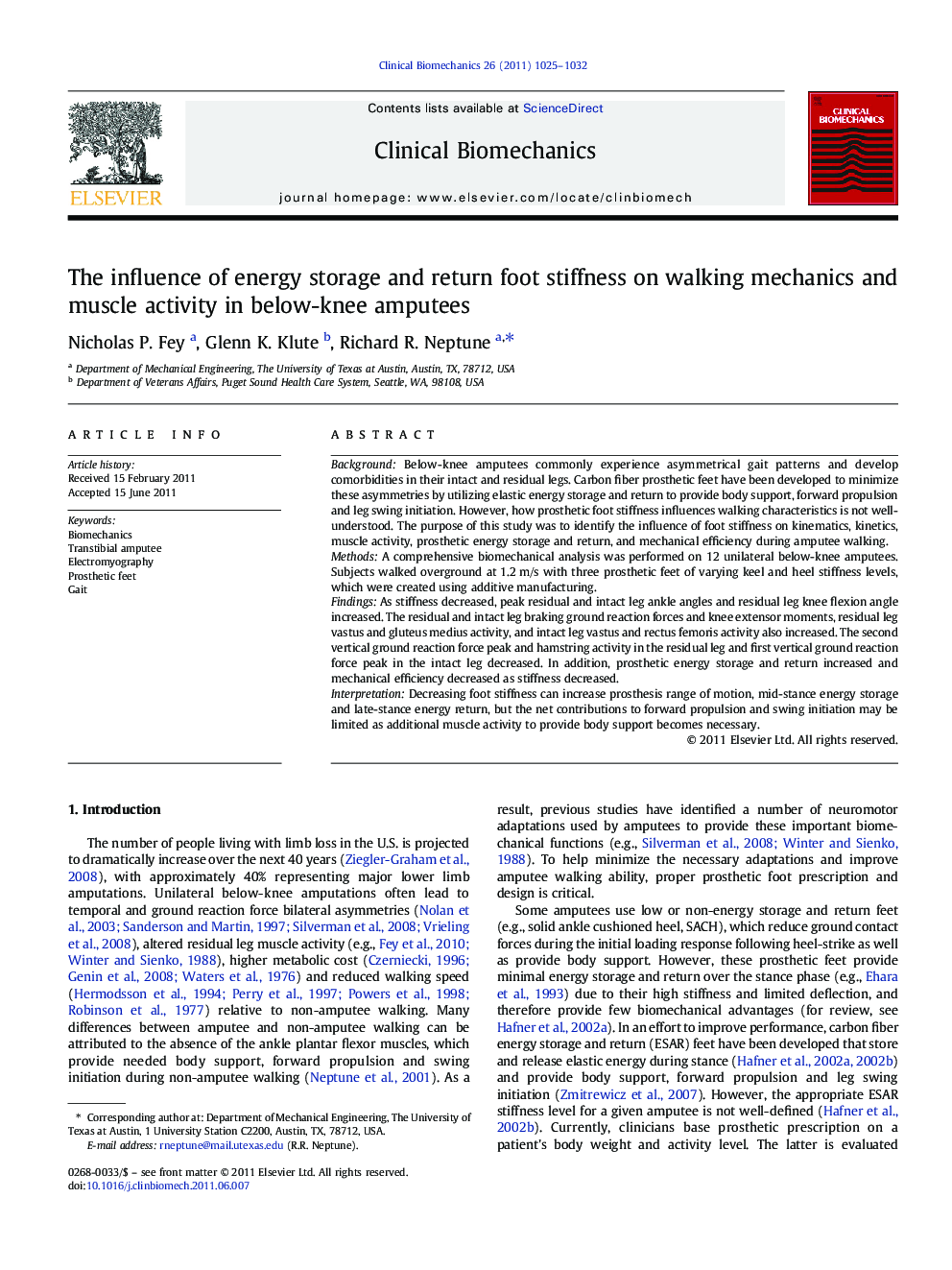| کد مقاله | کد نشریه | سال انتشار | مقاله انگلیسی | نسخه تمام متن |
|---|---|---|---|---|
| 4050539 | 1264938 | 2011 | 8 صفحه PDF | دانلود رایگان |

BackgroundBelow-knee amputees commonly experience asymmetrical gait patterns and develop comorbidities in their intact and residual legs. Carbon fiber prosthetic feet have been developed to minimize these asymmetries by utilizing elastic energy storage and return to provide body support, forward propulsion and leg swing initiation. However, how prosthetic foot stiffness influences walking characteristics is not well-understood. The purpose of this study was to identify the influence of foot stiffness on kinematics, kinetics, muscle activity, prosthetic energy storage and return, and mechanical efficiency during amputee walking.MethodsA comprehensive biomechanical analysis was performed on 12 unilateral below-knee amputees. Subjects walked overground at 1.2 m/s with three prosthetic feet of varying keel and heel stiffness levels, which were created using additive manufacturing.FindingsAs stiffness decreased, peak residual and intact leg ankle angles and residual leg knee flexion angle increased. The residual and intact leg braking ground reaction forces and knee extensor moments, residual leg vastus and gluteus medius activity, and intact leg vastus and rectus femoris activity also increased. The second vertical ground reaction force peak and hamstring activity in the residual leg and first vertical ground reaction force peak in the intact leg decreased. In addition, prosthetic energy storage and return increased and mechanical efficiency decreased as stiffness decreased.InterpretationDecreasing foot stiffness can increase prosthesis range of motion, mid-stance energy storage and late-stance energy return, but the net contributions to forward propulsion and swing initiation may be limited as additional muscle activity to provide body support becomes necessary.
Journal: Clinical Biomechanics - Volume 26, Issue 10, December 2011, Pages 1025–1032